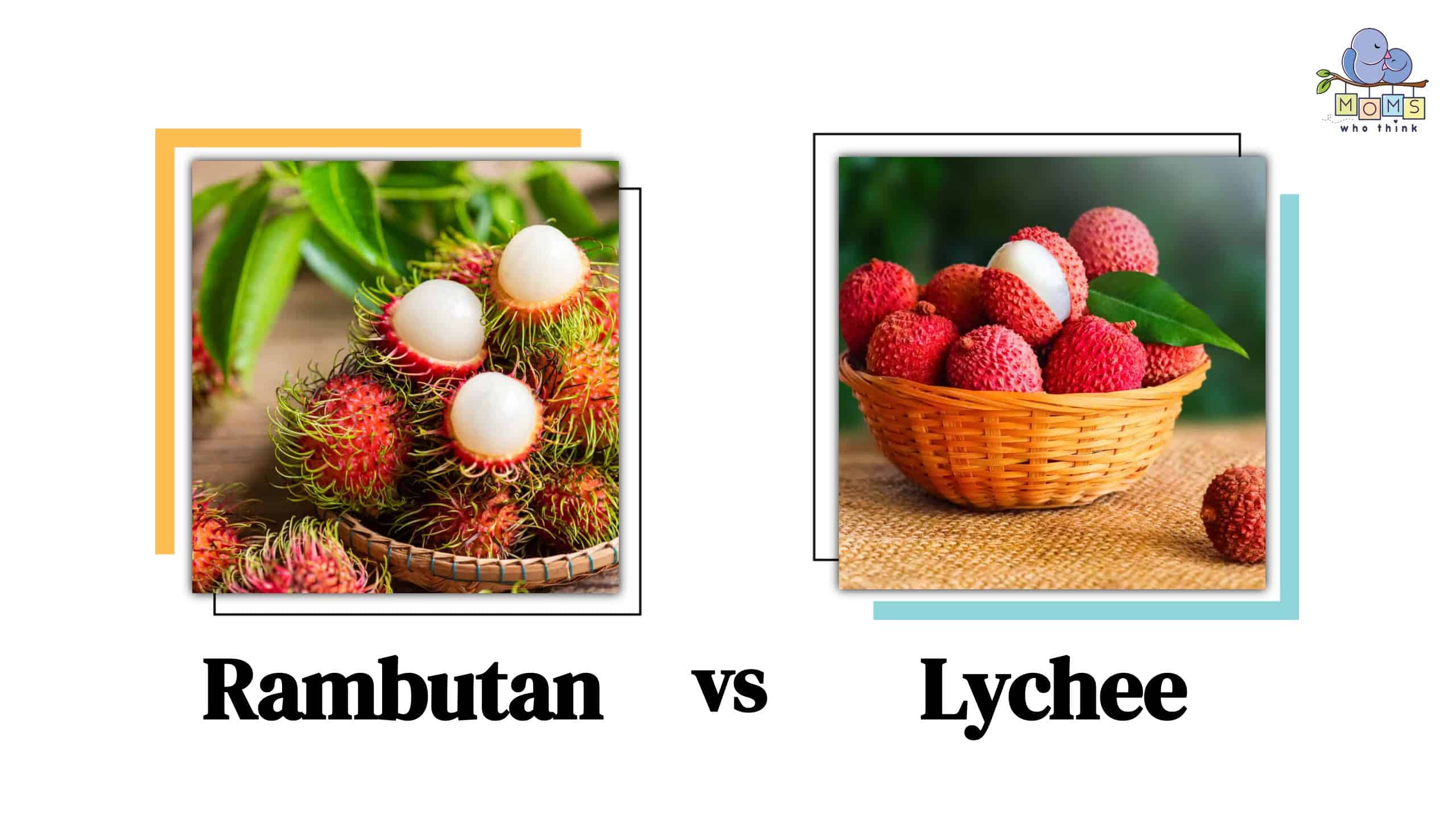There are over 2,000 types of fruits in the world, but few are as unique as lychee and rambutan. These two tropical fruits both come from the soapberry family, and while you don’t see them often in the United States, they’re staples in Asian cuisine. Many people confuse rambutan and lychee, so you might wonder about the difference between them.
The main difference between rambutan and lychee is their outer appearance and taste. While rambutan has long hairs or spikes on the outside, lychee has a bumpy exterior and looks similar to a strawberry. Also, rambutan has a much sweeter flavor, while lychee is more tart and acidic.
Lychee and rambutan both make for a delicious snack, but there are many differences between them. Read on to find out more about how to tell the difference between rambutan and lychee.
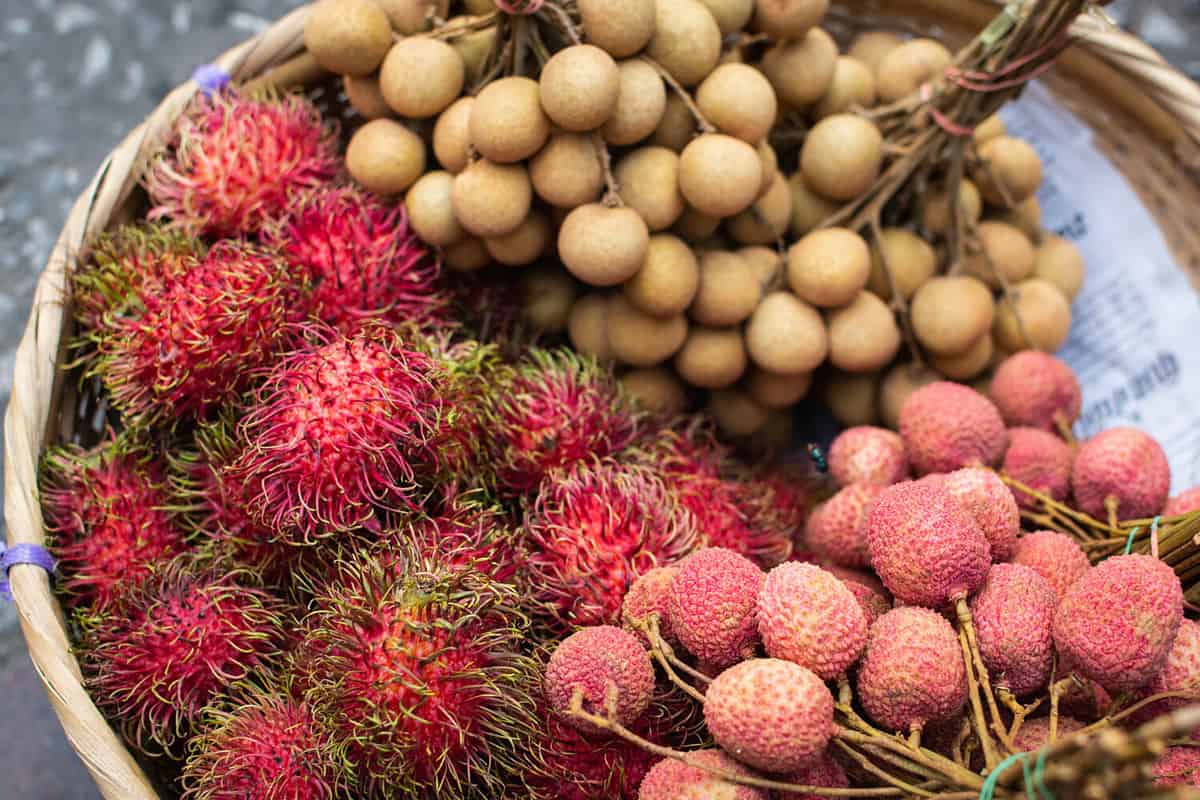
Even though rambutan and lychee come from the same family, there are many differences between them.
©leonov.o/Shutterstock.com
Rambutan vs. Lychee: What Is the Difference?
Even though rambutan and lychee are both exotic fruits, they look different and taste different. They’re often compared because of their similar size and shape, but the differences in their outer appearance stop there.
- The must-have convenient reference guide for every home cook!
- Includes more than 8,000 substitutions for ingredients, cookware, and techniques.
- Save time and money on by avoiding trips to grab that "missing" ingredient you don't really need.
The main difference in the appearance of rambutan vs. lychee is that rambutan has soft spikes on the outside. This bizarre-looking fruit is often described as hairy because the flexible spikes on the outside of the rambutan look like hair. Unlike rambutan, lychee doesn’t have any spikes. Instead, it has a rough, bumpy exterior and resembles a strawberry.
If you cut open a rambutan and lychee, it’s harder to tell the difference between them. Both fruits have a white interior and an inedible seed on the inside. Once you bite into them, you’ll notice they have slightly different flavors since rambutan is less acidic and sweeter than lychee. Lychee is sweet but also acidic with a subtle citrus flavor.
There are many benefits to eating both these tropical fruits. Let’s take a closer look at the main differences between these two exotic fruits.
Main Differences Between Rambutan vs. Lychee
Despite being from the same family, there are many differences between rambutan and lychee. Here are the main differences between them:
- They have a different outer appearance.
The outer appearance of lychees and rambutan is probably the most striking difference between them. While lychees have a red and bumpy exterior, rambutans are hairy with long, flexible spikes on the outside. - Rambutans are sweeter than lychee.
Rambutans and lychee are both in the soapberry family, but they do have slightly different flavors. Rambutan is not only creamier, but it’s also sweeter than lychee. - Lychees have slightly fewer calories.
While they are pretty similar nutritionally, lychee has slightly less calories but slightly more fat. Overall, the nutritional differences are minimal.
Nutritional Value of Rambutan vs Lychee
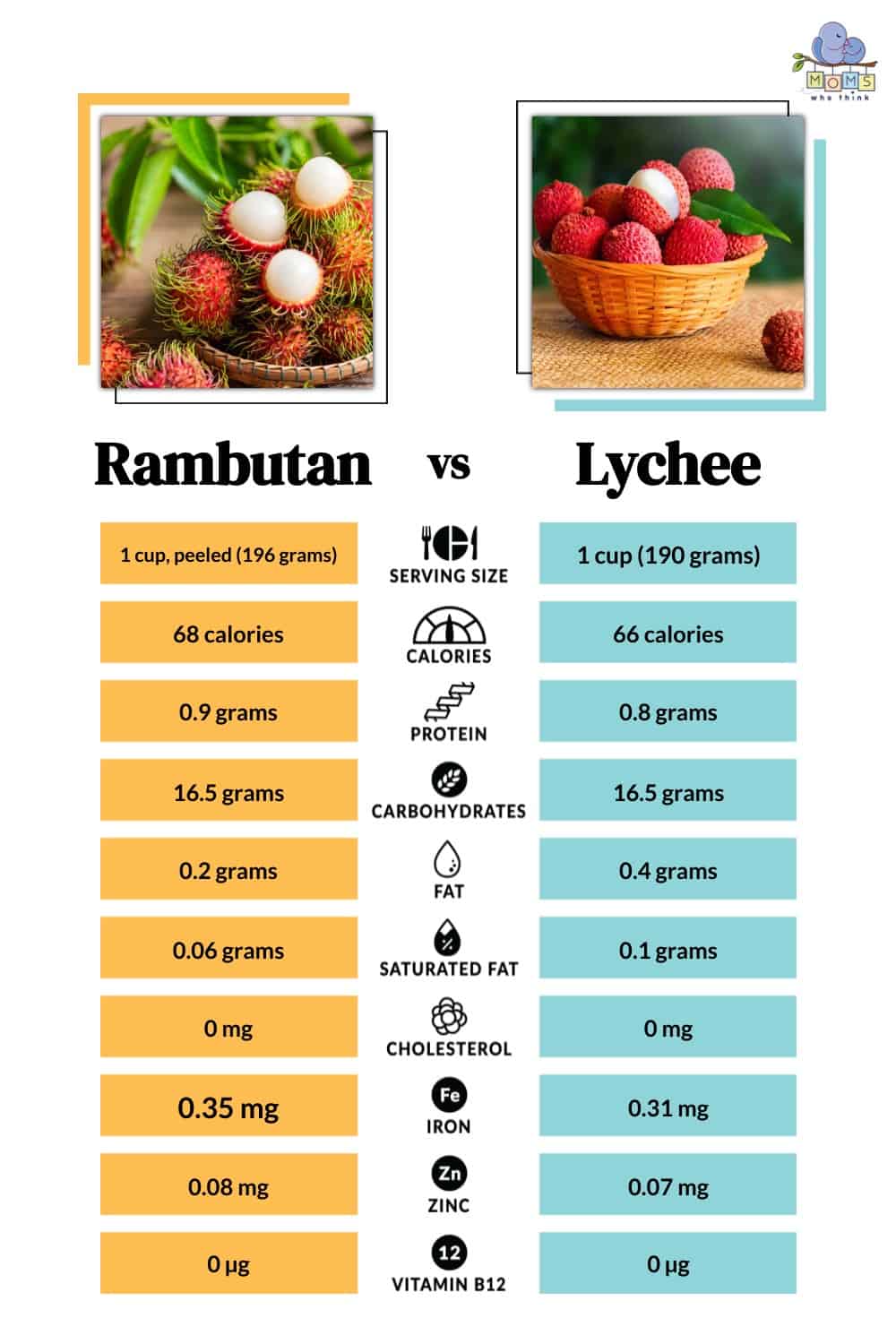
What Is a Rambutan?
If you’ve never seen a rambutan before, you might not even know it’s a fruit by looking at it from the outside. Rambutan is an exotic fruit that grows in Southeast Asia. However, this funky-looking fruit has flexible spikes on the outside that distinguish it from lychee and other similar fruits.
The outside of a rambutan is red with long red or green hairs. Once you cut open the rambutan, the inside of the fruit is white and creamy. Even though the inside of a rambutan looks similar to a lychee’s interior, the rambutan is creamier and sweeter.
Most people compare the flavor of a rambutan to that of a strawberry or a grape. While you might eat rambutan simply because of its delicious flavor, eating rambutan comes with many health benefits as well.
Rambutans are high in nutrients such as antioxidants, fiber, and vitamin C. The amount of fiber in rambutans is similar to that of other nutritious fruits like apples and oranges. They also have antibacterial, anti-diabetic, and anti-inflammatory properties.
What Is a Lychee?
A lychee is a tropical and exotic fruit that comes from the same family as rambutan. Like rambutan, it’s native to Asia, but it can grow in other regions as well, especially in warm climates like Hawaii. The outer appearance of lychee sets it apart from rambutan. Lychee doesn’t have the same hair as rambutan and almost looks like a bumpy strawberry.
The flavor of a lychee is similar to a strawberry or grape mixed with citrus. The flavor is similar to a rambutan, but it’s more tart. The interior of both fruits does look similar, but the lychee isn’t as creamy.
Even though lychee is a staple in Asian cuisine, it’s starting to become more popular in the United States. You would be hard-pressed to find fresh lychee in most places, but you can purchase lychee dried or canned. Look in a local Asian market if you can’t find the dried or canned version in a grocery store near you.
You can eat lychee raw, but lychee fruit or juice is one of the most popular ways to consume it. Like rambutan, lychee is high in nutrients such as vitamin C and potassium. They’re also a great source of antioxidants.
- The must-have convenient reference guide for every home cook!
- Includes more than 8,000 substitutions for ingredients, cookware, and techniques.
- Save time and money on by avoiding trips to grab that "missing" ingredient you don't really need.
Is Lychee Healthier Than Rambutan?
Both lychee and rambutan are low-calorie fruits that pack a punch when it comes to vitamins and minerals. In fact, one cup of rambutan or lychee has less than 70 calories while providing you with a lot of essential nutrients. That being said, they're both healthy options, and one isn't necessarily healthier than the other. However, it's important to check if there's any added sugar, especially if you buy rambutan or lychee canned.
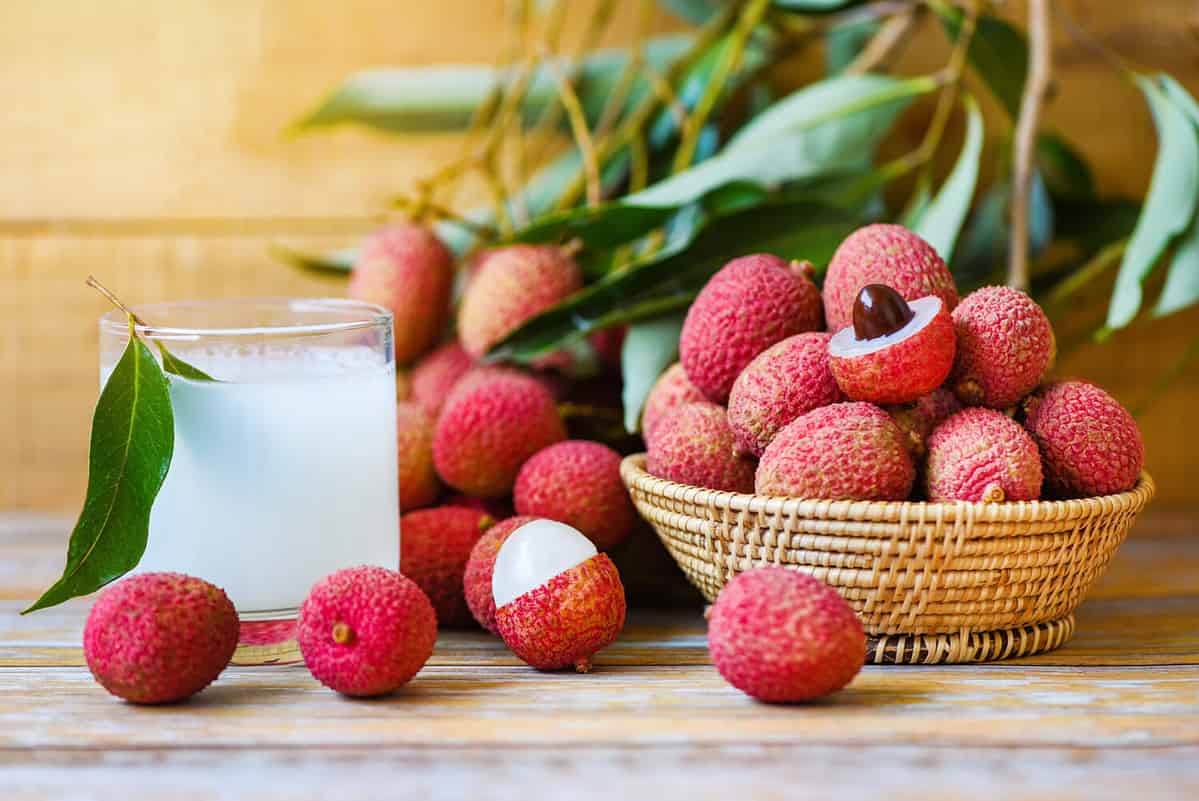
One of the most common ways to enjoy lychee is in the form of a drink.
©Bigc Studio/Shutterstock.com
Ways to Use Lychee and Rambutan
Aside from their many health benefits, you might wonder what rambutan and lychee can be used for in the kitchen. You can enjoy these fruits as a healthy snack or you can add them to different recipes.
If you can’t find fresh rambutan or lychee near you, you may be able to find it dried or canned. No matter how you purchase it, you can use rambutan and lychee in:
- Salads
- Smoothies
- Stir-fries
- Curry
- Ice cream
Also, one of the most common ways to use lychee is to make lychee juice, lychee drink, or lychee soda. Some versions of lychee drink describe a non-alcoholic beverage with lychee juice and sparkling water. There’s also an alcoholic version known as a lychee martini.
These drinks are most common in Asian countries, but if you want to try them at home, you may be able to find dried lychee in the exotic food aisle or at a local Asian market.
Since lychee and rambutan are both native to Southeast Asia, many of the recipes you’ll find that include these fruits are Asian-inspired recipes.
Can You Substitute Rambutan for Lychee?
Considering the differences between rambutan and lychee, it may not be clear whether you can substitute one for the other in a recipe. This depends on what you’re using them for. If you’re making a smoothie, for example, you can often use them interchangeably.
In other recipes, you may notice the difference in their flavor or texture if you make a substitution. When it comes to the nutritional values, there are only minor differences, so swapping them out won't significantly impact the nutrition of your meal or drink.
Choosing the Best Fruit: Rambutan vs. Lychee
While rambutan and lychee are both popular exotic fruits, there are many differences between them. You can use them both in a variety of ways, but they’re not often used interchangeably due to their different textures and flavors.
It may be difficult to find fresh lychee or rambutan, depending on where you live. If you do have the chance to try either of these exotic fruits, don't miss out on an opportunity to experience their unique flavors.
Tasty Lychee Recipe
If you're looking for a delicious recipe with lychee, look no further! Try this sweet treat. Enjoy!
Print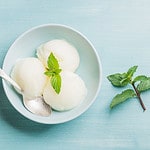
Healthy Lychee Mint Sorbet
- Total Time: 30 minutes
- Yield: 6 servings
Ingredients
- 2 cups fresh lychee, peeled and deseeded
- 1/2 cup fresh mint leaves
- 1 cup water
- 1/2 cup sugar
- 2 Tablespoons lime juice
Instructions
In a small saucepan, combine water and sugar. Heat over medium heat, stirring until the sugar completely dissolves. Allow the simple syrup to cool.
In a blender, combine lychee, mint leaves, lime juice, and the cooled simple syrup. Blend until smooth.
Strain the mixture through a fine-mesh sieve to remove any pulp or solids. Press down on the mixture with a spatula to extract as much liquid as possible.
Pour the strained mixture into an ice cream maker and churn according to the manufacturer's instructions.
Transfer the sorbet to a lidded container and freeze for at least 4 hours or until firm.
- Prep Time: 30 minutes
Nutrition
- Calories: 120
- Sugar: 28 g
- Sodium: 1 mg
- Fat: 0 g
- Carbohydrates: 31 g
- Fiber: 1 g
- Protein: 1 g
- Cholesterol: 0 mg
